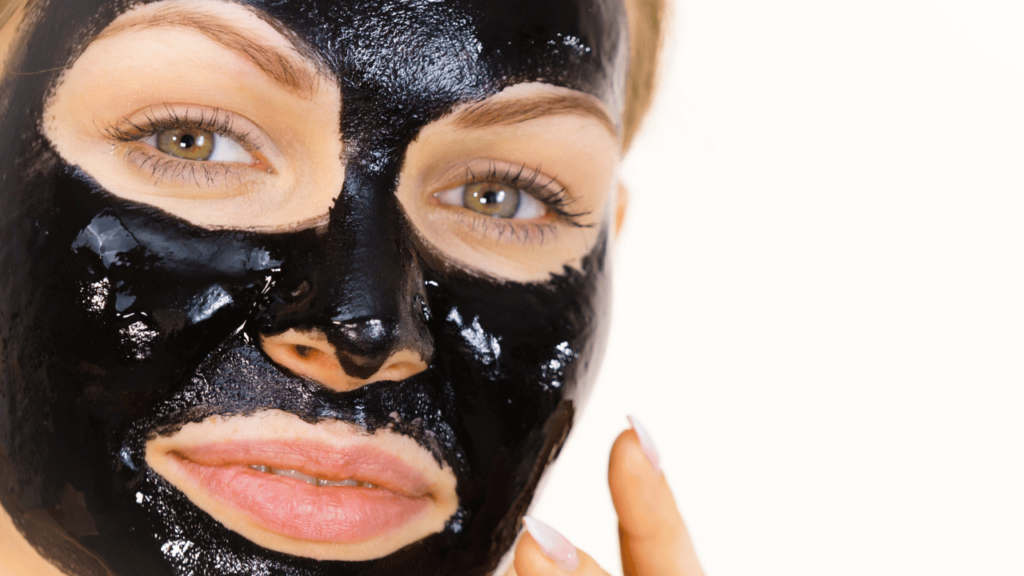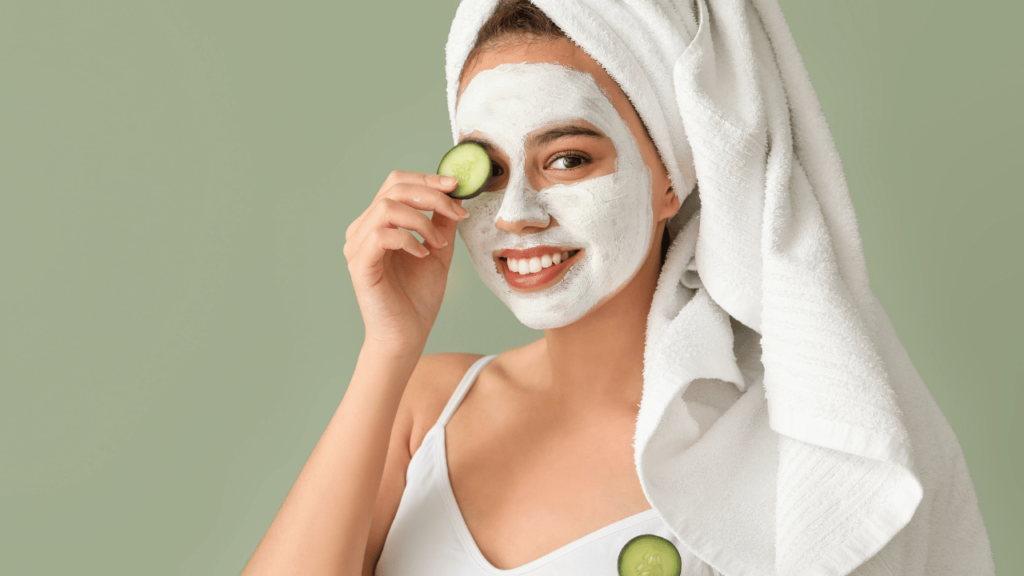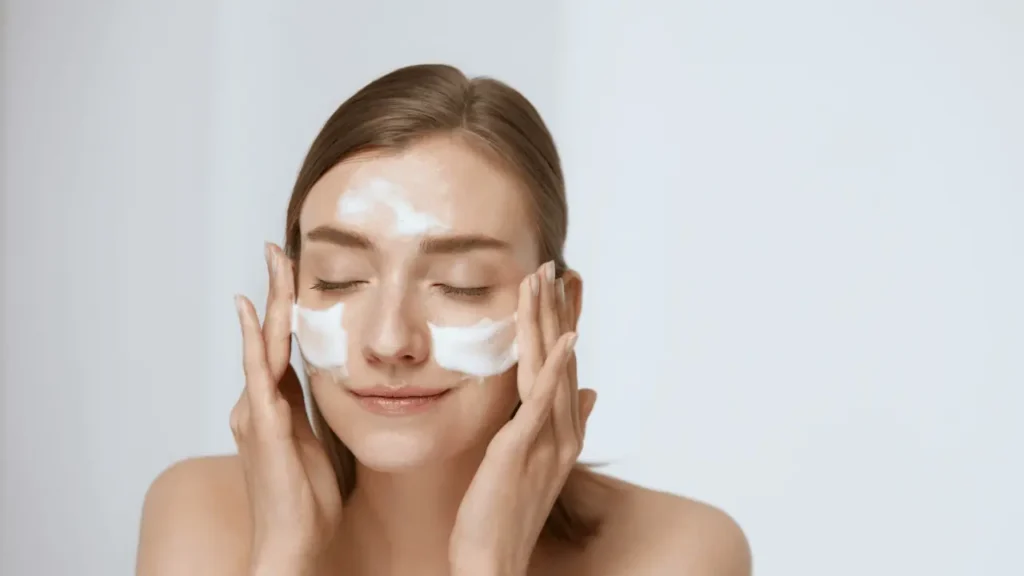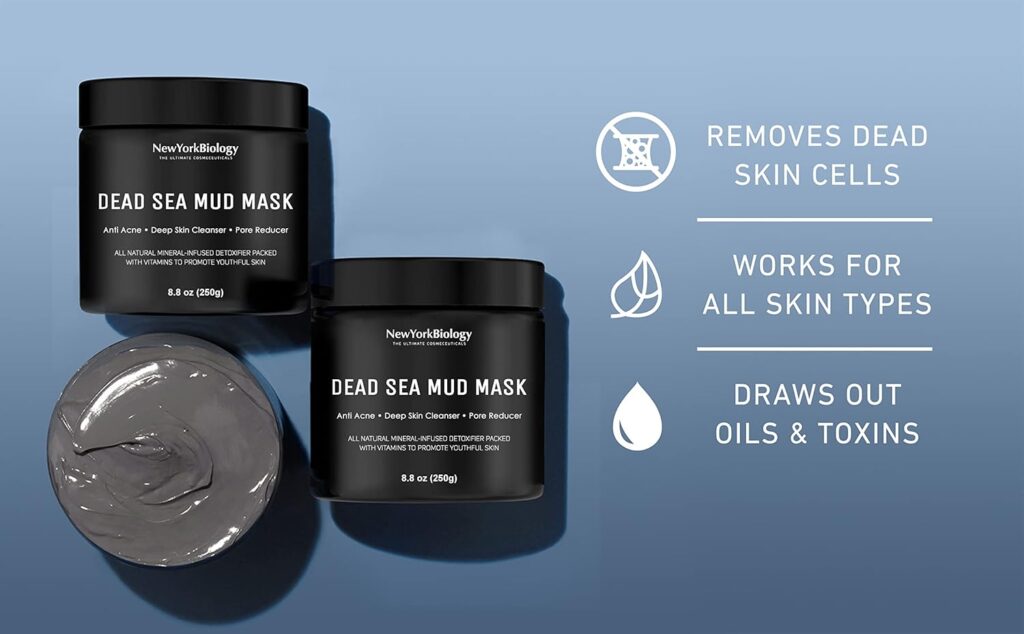If you’ve ever felt like your skin has a mind of its own—especially around that time of the month—you’re not alone. One day your skin is clear, and the next, you’re dealing with deep, painful breakouts that seem to appear out of nowhere along your jawline or chin.

Unlike the random pimples of our teenage years, hormonal acne follows patterns tied to our body’s internal rhythms and can persist well into adulthood. The good news? Understanding what causes hormonal acne, what triggers it, and how to manage it with the right skincare routine for acne-prone skin can make a world of difference.
What is Hormonal Acne?
Hormonal acne isn’t just any breakout—it’s a specific type of acne directly linked to fluctuations in hormones like estrogen, progesterone, and testosterone. While it can affect anyone, it’s particularly common among women, especially during periods of hormonal change.
Unlike regular acne that might appear anywhere on the face, hormonal breakouts love to cluster around the jawline, chin, and lower cheeks—though they can certainly show up elsewhere too. This “lower face” pattern is often a telltale sign that your hormones, not just bacteria or clogged pores, are behind your breakouts.
What makes hormonal acne especially frustrating is its nature. These aren’t your typical surface-level whiteheads or blackheads. Hormonal acne tends to be:
- Deeper and more cystic (those painful bumps under the skin)
- More stubborn and slower to heal
- Often tied to your menstrual cycle or other hormonal shifts
- Resistant to typical over-the-counter treatments
The painful, cystic nature of hormonal acne often means it leaves behind more significant scarring and hyperpigmentation, which is why addressing it properly is so important for long-term skin health.
Causes of Hormonal Acne: What’s Really Happening?
Hormonal Imbalances
Our bodies are constantly adjusting hormone levels, but certain life stages and cycles trigger more dramatic shifts:
- Menstrual cycles: The week before your period, progesterone rises and then falls, while androgens (male hormones like testosterone that everyone has) may increase, stimulating oil glands.
- Perimenopause and menopause: As estrogen levels decline, the relative influence of androgens increases, often triggering acne even if you’ve had clear skin for decades.
- Pregnancy and postpartum: The massive hormonal shifts during and after pregnancy can trigger breakouts even in those who’ve never struggled with acne before.
- PCOS (Polycystic Ovary Syndrome): This common condition involves elevated androgens, leading to persistent hormonal acne along with other symptoms.
Excess Sebum Production
Androgens stimulate your sebaceous glands to produce more sebum (oil). While sebum helps protect your skin barrier, too much creates the perfect environment for acne-causing bacteria to thrive. This excess oil mixes with dead skin cells, creating plugs in your follicles that develop into pimples.
Inflammation
Hormonal fluctuations don’t just increase oil—they can make your entire body more prone to inflammation. This elevated inflammatory response means your skin reacts more dramatically to triggers it might otherwise handle without issue. The result? More redness, swelling, and those painful cystic bumps characteristic of hormonal acne.
Genetics
If your parents or siblings dealt with hormonal acne, you’re more likely to experience it too. Genetic factors influence how your skin responds to hormonal changes, how quickly your cells turn over, and even how your body processes certain foods that might trigger breakouts.
Common Triggers That Make Hormonal Acne Worse
Diet & Blood Sugar Spikes
What you eat doesn’t just affect your waistline—it impacts your hormones too:
- High-glycemic foods: Foods that spike blood sugar (like white bread, candy, soda, and processed carbs) trigger insulin production, which can increase oil production and worsen acne.
- Dairy: Many studies link dairy consumption—especially skim milk—to increased acne severity. Dairy contains hormone precursors that may stimulate oil glands.
- Whey protein: Popular among fitness enthusiasts, whey protein supplements have been linked to increased breakouts in many people with acne-prone skin.
Stress & Cortisol
Ever notice breakouts before a big presentation or during a difficult life transition? That’s not a coincidence:
- Chronic stress raises cortisol levels, which can trigger increased oil production
- Stress disrupts sleep, which further impacts hormone balance
- Stress-related behaviors (touching your face, picking at skin) worsen existing breakouts
When cortisol rises, it affects other hormones in your body, creating the perfect storm for breakouts.
Wrong Skincare Products
Your skincare routine for acne-prone skin might actually be making things worse if you’re:
- Using harsh, stripping cleansers that compromise your skin barrier
- Over-exfoliating, which triggers inflammation and increased oil production
- Skipping moisturizer (even oily skin needs hydration!)
- Using comedogenic (pore-clogging) products with ingredients like coconut oil or isopropyl myristate
Many people with hormonal acne make the mistake of attacking their skin with increasingly harsh products, creating a damaged barrier that’s even more prone to breakouts.
Lack of Sleep
Beauty sleep isn’t just an expression—it’s science:
- During deep sleep, your body regulates hormone production
- Poor sleep increases inflammation throughout the body
- Sleep deprivation raises cortisol levels, triggering more oil production
- Skin cell turnover and repair happens primarily during sleep
Consistently getting less than 7 hours of quality sleep can make hormonal acne significantly worse.
How to Treat and Manage Hormonal Acne
1. Build an Acne-Friendly Skincare Routine
The right skincare routine for acne-prone skin focuses on gentle cleansing, targeted treatments, and maintaining your skin barrier:
Morning Routine:
- Gentle cleanser: Look for sulfate-free formulas with soothing ingredients
- CeraVe Hydrating Facial Cleanser – Contains ceramides and hyaluronic acid
- Vanicream Gentle Facial Cleanser – Free from common irritants, ideal for sensitive skin
- Hydrating toner: Opt for alcohol-free formulas with ingredients like green tea or niacinamide
- COSRX Green Tea Aqua Soothing Toner – Calming and hydrating
- Paula’s Choice Enriched Calming Toner – Contains antioxidants and niacinamide
- Niacinamide serum: This powerhouse ingredient regulates oil production and reduces inflammation
- The Ordinary Niacinamide 10% + Zinc 1% – Budget-friendly option that helps control oil
- Paula’s Choice 10% Niacinamide Booster – Premium formulation with additional soothing ingredients
- Lightweight moisturizer: Gel or lotion formulas with hyaluronic acid hydrate without clogging pores
- Neutrogena Hydro Boost Gel-Cream – Oil-free, lightweight gel texture
- CeraVe PM Facial Moisturizing Lotion – Contains niacinamide and ceramides
- Sunscreen: Non-comedogenic, oil-free SPF 30+ (crucial, as many acne treatments increase sun sensitivity)
- EltaMD UV Clear Facial Sunscreen SPF 46 – Contains niacinamide, ideal for acne-prone skin
- La Roche-Posay Anthelios Clear Skin Dry Touch Sunscreen SPF 60 – Oil-free, won’t cause breakouts
Evening Routine:
- Double cleanse: Start with an oil cleanser or micellar water to remove makeup/sunscreen, follow with a gentle cleanser
- First cleanse: Bioderma Sensibio H2O Micellar Water or DHC Deep Cleansing Oil
- Second cleanse: Use your morning cleanser again
- Treatment step: Rotate between:
- Salicylic acid (2%) to clear pores
- Paula’s Choice 2% BHA Liquid Exfoliant – Gold standard salicylic acid treatment
- The Inkey List Beta Hydroxy Acid – Affordable option for regular use
- Benzoyl peroxide (start with 2.5%) for inflammatory acne
- Paula’s Choice Clear Daily Skin Clearing Treatment with 2.5% Benzoyl Peroxide – Less irritating concentration
- Acne.org 2.5% Benzoyl Peroxide Treatment – Large size, good value
- Retinoid (start slowly, 1-2 times weekly) for long-term prevention
- Differin Gel (Adapalene 0.1%) – The only OTC retinoid FDA-approved for acne
- The Ordinary Granactive Retinoid 2% Emulsion – Gentler formula for beginners
- Salicylic acid (2%) to clear pores
- Barrier-supporting moisturizer: Look for ceramides, peptides, and centella asiatica to repair skin
- La Roche-Posay Toleriane Double Repair Face Moisturizer – Contains ceramides and niacinamide
- COSRX Advanced Snail 92 All-In-One Cream – Contains snail mucin to heal and hydrate
- Etude House Soon Jung 2x Barrier Intensive Cream – Contains centella asiatica, great for sensitive skin
Important reminder: Avoid over-exfoliating. Limit chemical exfoliants to 2-3 times weekly, and skip physical scrubs entirely—they can worsen inflammation and spread bacteria. When introducing new products, add them one at a time with at least a week between additions to identify any potential irritants.
Budget-friendly tip: If you need to prioritize purchases, focus first on a gentle cleanser, treatment product (like salicylic acid), moisturizer, and sunscreen. You can add specialized products like serums and toners as your budget allows.
2. The Best Ingredients for Acne-Prone Skin
Not all skincare ingredients are created equal when it comes to hormonal acne. These science-backed ingredients should be in your arsenal:
Salicylic Acid (BHA)
This oil-soluble acid penetrates deep into pores to dissolve clogs and reduce inflammation. It’s particularly effective for blackheads and whiteheads that accompany hormonal breakouts.
Niacinamide
A true multitasker, niacinamide (vitamin B3) regulates oil production, strengthens your skin barrier, reduces redness, and fades post-acne marks. Most skin types can tolerate concentrations between 2-10%.
Retinoids
Whether over-the-counter (adapalene) or prescription (tretinoin), retinoids normalize cell turnover, prevent clogged pores, and boost collagen production for long-term skin health. Start slowly—once weekly, then gradually increase.
Hyaluronic Acid
This hydrating ingredient holds up to 1000 times its weight in water, providing oil-free moisture that won’t clog pores. Well-hydrated skin actually produces less excess oil.
Azelaic Acid
Often overlooked, this ingredient fights bacteria, reduces inflammation, fades hyperpigmentation, and helps regulate cell turnover. It’s gentle enough for sensitive skin and safe during pregnancy.
3. Lifestyle Changes That Help
Skincare alone can’t fix hormonal acne. These lifestyle adjustments make a significant difference:
Balance Your Diet
- Reduce high-glycemic foods and replace with complex carbs (whole grains, legumes)
- Experiment with reducing dairy (especially skim milk) for 3-4 weeks to see if it helps
- Increase omega-3 fatty acids through fatty fish, walnuts, and flaxseeds
- Stay hydrated—aim for 2-3 liters of water daily
Manage Stress
- Build a sustainable stress management routine (meditation, yoga, or even simple deep breathing)
- Schedule regular physical activity—it helps regulate hormones and reduce stress
- Set boundaries on work and screen time
- Consider adaptogens like ashwagandha if appropriate (consult a healthcare provider)
Stay Consistent
Hormonal acne isn’t fixed overnight. New skincare products need at least 4-6 weeks to show results, and hormonal treatments often take 3 months to demonstrate significant improvement. Track your progress with photos rather than daily mirror checks.
When to See a Dermatologist
- Your acne is painful, cystic, or leaving scars
- You’ve tried consistent over-the-counter treatments for 2-3 months without improvement
- Your breakouts are significantly affecting your quality of life or mental health
- You suspect underlying conditions like PCOS
A dermatologist can offer prescription options that target hormonal acne at its source:
- Spironolactone: This medication blocks androgen receptors, reducing oil production and inflammation (for women only)
- Birth control pills: Certain FDA-approved oral contraceptives help regulate hormones that trigger acne
- Topical prescriptions: Higher-strength retinoids, antibiotics, or combination treatments
- Procedures: Chemical peels, laser therapy, or cortisone injections for severe cysts
Final Thoughts
Dealing with hormonal acne can feel frustrating, but with the right approach, it’s totally manageable. Remember that perfect skin doesn’t exist, and occasional breakouts are normal—even with the best skincare routine for acne-prone skin.
The key is consistency, patience, and addressing hormonal acne from multiple angles. Pay attention to patterns in your breakouts, track what works, and be willing to adjust your approach as needed. Your skin is constantly changing, and what worked last year might need tweaking now.
Most importantly, be kind to yourself throughout the process. Acne doesn’t define your worth or beauty—it’s simply a skin condition that millions of people manage every day.
Have you found something that works particularly well for your hormonal acne? Share your experience in the comments below! Your journey might be exactly what someone else needs to hear.









Pingback: The Clear Skin Diet: Foods That Help and Hurt Your Acne